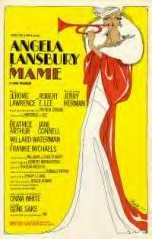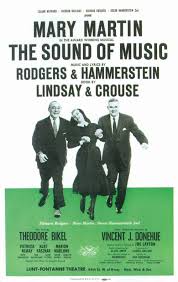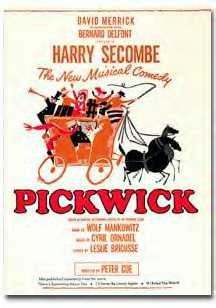
From Broadway To 52nd Street
Mame raised the curtain to the stage lights of the Winter Garden Theatre on May 24, 1966 with Jerry Herman composing the music sung by the stars of the show Angela Lansbury, Frankie Michaels and Beatrice Arthur. The musical, also a blockbuster, had a total of 1,508 performances. From this play came the hit tune If He Walked Into My Life.
The Story: Set in New York and spanning the Great Depression and World War II, it focuses on an eccentric bohemian, Mame Dennis, whose famous motto is “Life is a banquet and most poor suckers are starving to death.” Her fabulous life with her wealthy friends is interrupted when the young son of her late brother arrives to live with her. They cope with the Depression in a series of adventures.
Jazz History: In 1966 Duke Ellington recorded Far East Suite for RCA; John Coltrane married Alice McCleod, who replaced McCoy Tyner as his pianist; alto saxophonist Cannonball Adderley records Joe Zawinul’s Mercy, Mercy, Mercy! live on Blue Note; pianist Keith Jarrett performs with the Charles Lloyd Quartet; the Roscoe Mitchell Sextet records Sound in August with members of Chicago’s AACM community; drummer Buddy Rich starts up a big band which would last about twenty years; bop piano immortal Earl “Bud” Powell dies on July 31st; on October 3, Dave Lambert of Lambert, Hendricks and Ross fame is struck by a car and killed instantly while trying to help a fellow motorist on the Connecticut Turnpike; and trumpeter Chet Baker is severely beaten on the streets of San Francisco, an event related to his drug addiction while his wife Carol Baker was in the hospital for the birth of their youngest child, Missy.
Sponsored By
www.whatissuitetabu.com

From Broadway To 52nd Street…
The Sound Of Music brought up the curtain of the Lunt Fontanne Theatre on November 16, 1959 and finished with a blockbuster run of 1443 performances. The show starred Mary Martin and Theodore Bikel. The song My Favorite Things composed by Richard Rodgers and Oscar Hammerstein went on to become a jazz standard. The show won a Tony Award for Best Musical.
The Story: Based on the Trapp family story the musical takes us on their journey to escape the Nazis. Set in Salzburg, Austria just before World War II, Maria Rainer, one of the postulates from Nonnberg Abbey is wrestling with her decision to joining monastic life or pursue more secular endeavors. With the help of the Mother Abbess she is placed in the home of Captain Georg von Trapp to act as governess to his seven children. As war looms over their happy existence they escape to Switzerland over the Alps.
Details of the von Trapp history were changed for the musical. They lived in a villa outside Salzburg, Maria was a tutor for one child, the names and ages were altered, and the family spent time in Austria after Maria and the Captain were married. Opposing the Nazi regime, he declined a commission in the German Navy, left Austria for Italy, then on to London and finally to the United States. The escape over the mountains on foot provided more drama for the play.
Broadway History: Broadway theatre,commonly called simply Broadway, is theatrical performances presented in one of the 40 professional theatres with 500 or more seats located in the theater District and Lincoln Center along Broadway in the Manhattan borough of New York City. Along with London’s West End theatres, Broadway theatres are widely considered to represent the highest level of commercial theatre in the English-speaking world.
Sponsored By
www.whatissuitetabu.com

From Broadway To 52nd Street
Pickwick opened at the 46th Street Theatre on October 4, 1965 and ran 56 performances with the music composed by Cyril Ornadel and Leslie Bricusse. The song that rose to great heights is the Great American songbook and became a jazz standard was If I Ruled The World.
The Story: Set in England in 1828, the story centers on wealthy Samuel Pickwick and his valet Sam Weller, who are in a debtors’ prison where they recall the misadventures that led to their imprisonment. On the previous Christmas Eve, Pickwick introduced his friend Wardle, Wardle’s daughters, Emily and Isabella, and their Aunt Rachael to Nathaniel Winkle, Augustus Snodgrass, and Tracy Tupman, three members of the Pickwick Club. Soon, Alfred Jingle joined them and tricked Tupman into paying for his ticket to a ball that evening. Upon learning Rachael is an heiress, Jingle set out to win her hand and eventually succeeded. Pickwick engages Sam Weller as his valet and, through a series of misunderstandings, he inadvertently leads his landlady, Mrs. Bardell, to believe he has proposed marriage to her. Pickwick is charged with breach of promise and hauled into court, where he is found guilty as charged and sentenced to prison when he stubbornly refuses to pay her compensation.
Jazz History: In 1965 Miles Davis records ESP with his new quintet; pianist/vocalist Nat King Cole dies of cancer; Herbie Hancock records Maiden Voyage, a classic modal tune, with the other members of Miles Davis’ group plus trumpeter Freddie Hubbard; trumpeter Thad Jones and drummer Mel Lewis form a rehearsal orchestra that is to last for years and is still in existence today; and John Coltrane records Ascension, a free jazz experiment influenced by Ornette Coleman.
Sponsored By
www.whatissuitetabu.com

From Broadway To 52nd Street
The Roar Of The Greasepaint – The Smell Of The Crowd opened its season at the Shubert Theatre on May 16, 1965 and ran for 231 performances. Leslie Bricusse and Anthony Newley composed the music with the later starring alongside Cyril Ritchard. From these two talented lyricist and composer, Who Can I Turn To and Look At That Face entered the lexicon of jazz standards.
The Story: The allegorical plot examines the maintenance of the status quo between the upper and lower classes of British society in the 1960s. Since Sir forever is changing the rules of the game of life, downtrodden young Cocky always gets the short end of the stick. Assisting Sir is his eager disciple Kid, anxious to pick up bits of wisdom while helping keep Cocky in his place.
Broadway History: Musical theatre is a form of theatrical performance that combines songs, spoken dialogue, acting, and dance. The story and emotional content of a musical may have humor, pathos, love, anger and are communicated through the words, music, movement and technical aspects of the entertainment as an integrated whole. Although musical theatre overlaps with other theatrical forms like opera and dance, it may be distinguished by the equal importance given to the music as compared with the dialogue, movement and other elements. Since the early 20th century musical theatre stage works have generally been called, simply, musicals.
Sponsored By
www.whatissuitetabu.com

From Broadway To 52nd Street
Greenwillow rose the curtain of the Alvin Theatre on March 8, 1965 with Anthony Perkins as the lead but only lasted 95 performances. Frank Loesser composed the music for the show from which Never Will I Marry rose to stand amongst the other classic jazz tunes.
The Story: A homespun fantasy that had to do with quaint superstitions and folklore of a mythical village located on the Meander River. The whimsical tale takes up the conflict of young Gideon Briggs who would rather stay home and marry his summertime love, but who fears that the curse of his family’s “call to wander solitary” will someday make him run off to sail distant seas.
Jazz History: The birth of funk can probably be traced back to 1967 when bop saxophonist Lou Donaldson hit big with Alligator Boogaloo. It was the start of a movement – and, to many, the demise of the legendary Blue Note label. Jazz labels like Blue Note, Prestige and Atlantic, who stayed alive selling R&B records, recognized the value of funk instantly. These labels, their artists and producers Bob Porter, Francis Wolf and Joel Dorn were the primary movers and shakers of the whole genre. But there were certainly others who came along and funked up their jazz, such as Creed Taylor’s CTI and Kudu output between 1970 and 1975). The whole thing probably ended in 1975, when disco and an increasing array of electronica started taking funk in a new yet still worthy direction. But the musical edge of funk was clearly getting replaced with slicker effects.
A decade later, when jazz was suffering under the post-fusion tradition-bound conservatism of Wynton Marsalis and “the new young lions,” young DJs in London spearheaded by Gilles Peterson began to rediscover these old funk records in thrift shops and spun them for the young dancers in the hippest clubs. Here, “acid jazz” was born. It still took another decade for the US to realize its own funk legacy and by the late 1990s, surviving funk musicians were finally getting paying work and hero worship bestowed upon them.
Sponsored By
www.whatissuitetabu.com


